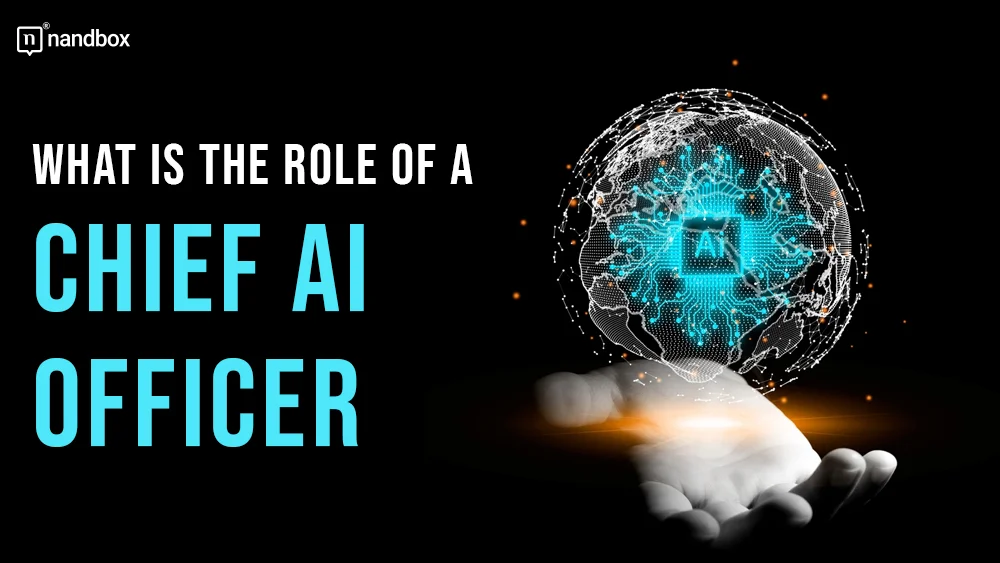With the birth of this technological era, a whole new set of challenges greets us each and every day. That is the price we pay for evolution. If you ask me, it is an intriguing price, not a negative one. Maybe that point varies from one person to another. However, new roles are getting ahead of us in this technological era. That is why, in this guide, we’ll learn about the role of a chief AI officer. Additionally, learn why it is in demand from companies nowadays. This is one role that stands out in this AI generation. Let us discover how this role can change organizations and help us achieve the impossible.
The Need of a CAIO: The Evolving Process of This Role
CAIO, which stands for Chief AI Officer, is a C-suite administrator. It is in charge of managing and directing an organization’s AI projects. Leadership that has a thorough understanding of AI’s many facets. From its technical complexities to its tactical software, it is becoming increasingly important as the potential of technology in the business sector grows. When I mention AI, I don’t mean it as something or some tool that IT workers simply use or take advantage of. AI is now reshaping life as we know it. When you integrate AI in an efficient way, you get to do a lot of efficient things and operations related to your business like you’ve never before. AI can simply help you refine your business operations through redefining your business models, creating unique customer experiences, and optimizing various tasks and operations. Many businesses have realized that incorporating AI alone is insufficient as they become more aware of the extent of AI’s impact. They have come to realize how important leadership is in AI.
C-Suit: A Quick Relative Overview to Help You Connect The Dots
The people who hold positions in the C-suite or top management, as I would like to call them, are considered to be among the most significant and powerful in a corporation. To reach such a lofty tier, one often needs a wealth of professional expertise as well as managerial skills that have been properly refined. While many C-level executives in the past depended on operational expertise and technical abilities. That is, in order to climb the lower levels of the corporate hierarchy, the majority of today’s C-level executives have developed the more innovative viewpoints that are necessary to make solid senior-level judgments. When people think of the C-suite, they almost always picture the CEO, CFO, and COO in their heads. Nevertheless, this executive level encompasses a number of other professions as well.
The Main Responsibility of a CAIO: The Role and It’s Challenges
With more companies integrating and implementing more AI in their daily tasks and operations, the chief AI officer now has more responsibilities to steer a racing cart effectively through millions of other cars. In the paragraph below, we’ll delve into the many responsibilities of a chief AI officer in order to get to know that title better.
Set a Strategy and a Vision

A Chief AI Officer’s (CAIO) responsibilities go beyond merely incorporating AI into the company’s operations. Fundamentally, it is about developing an AI vision that is focused on the foreseeable future and smoothly integrates with the overall objectives of the business. This isn’t just about using AI; it’s also about identifying the precise domains. Whereby AI may make a significant impact, such as improving interactions with clients or optimizing logistics processes. The CAIO makes sure that the corporation is headed toward realizing all of the advantages of artificial intelligence by connecting the distance between the technology’s potential and its goals.
Chief AI Officer Role: Implements the Strategy It Sets and Scales
Like a maestro with his orchestra, a chief AI officer will lead the way. This role helps in managing the strategy set for a certain business organization. An AI officer helps connect several business departments together. That is, in order to execute the strategy it sets in an efficient way. By coordinating resources and developing a scalable roadmap, the CAIO ensures the AI strategy thrives both on paper and in practice.
Implementation of Ethics With CAIO

In the current digital era, where data is referred to as “the newest fuel,” it is impossible to ignore the ethical ramifications of using AI. With all of its promise, artificial intelligence might have drawbacks. In this situation, a CAIO acts as the ethical focal point of the company. Their responsibility is to guarantee that AI technologies adhere to the constantly changing technological rules. Also, to respect user confidentiality, and operate with no innate biases. By doing this, they build trust with the company’s customer base while simultaneously shielding it from potential hazards.
Chief AI Officer Demystifies AI Simply and Efficiently
Despite becoming more and more common, AI is still mysterious for numerous people. Errors can obscure knowledge in a variety of contexts, including workplace talks and informal conversations. In this capacity as the company’s AI advocate, the CAIO intervenes. They ensure everyone, from executives to entry-level workers, is aligned by demystifying AI, addressing concerns, and highlighting its benefits.
Grants Companies and Organizations Continuous Innovations
AI is one of the most rapidly changing fields there is. Anything revolutionary now could become outdated eventually. Resting on their knees is not a feasible choice for a CAIO. They must always be learning, keeping up with the most recent developments in AI tools, studies, and standards of excellence. They create the foundation for an ongoing competitive edge in the industry. This will be carried out by encouraging an innovative culture and making sure the company is constantly at the forefront of AI.
Why a Chief AI Officer Is Needed In Nowadays’ Businesses

The necessity for every company to employ a Chief Artificial Intelligence Officer (CAIO) is growing more and more apparent in the fast-paced and competitive modern corporate world. The initial and primary reason is the requirement for comprehensive integration of artificial intelligence. Instead of letting AI work stay separate in different departments, a chief artificial intelligence officer (CAIO) makes sure that AI works as a single, integrated unit that makes company processes easier and better. However, the march toward AI will not be without its challenges.
While this technological innovation holds the promise of enormous opportunities, it also presents its own unique set of difficulties. At this point, managing risks has the utmost importance. The knowledge of a chief information officer (CAIO) is crucial to a business when it involves navigating securely across potential dangers such as possible prejudices that are ingrained in algorithms as well as flaws that could pose risks to security. The physical component of return on investment is something to consider in addition to integration and risk navigation. Success does not necessarily follow automatically from the implementation of AI by itself. The Chief Artificial Intelligence Officer (CAIO) is responsible for ensuring that the organization’s AI investments result in measurable and meaningful returns through the deliberate implementation and continual optimization of AI systems.
The Upcoming Future of a Chief AI Officer (CAIO)
The value and importance of the post of chief AI officer (CAIO) will only increase as the development of AI proceeds. Some of the most progressive companies have, in fact, come to the conclusion that this stance is extremely important from a strategic standpoint. Having a dedicated senior leader to properly leveraging the power of AI in an environment where nearly every business stands to be transformed by AI. This could make the distinction between driving the charge and playing catch-up. In this environment, AI has the potential to reshape nearly every sector.
The Chief Artificial Intelligence Officer arises as a beacon, therefore guiding enterprises through the maze of artificial intelligence (AI) unity, guaranteeing compliance with ethical standards, fostering creativity, and eventually making sure AI’s transformational promise becomes a reality. In a world where data and automation rule, the Chief Analytics & Information Officer (CAIO) position might be the most significant addition to the current C-suite.
Final Thoughts!
My final thoughts regarding this little interesting topic of ours will be brief and AI-related. Duh! I know. Let me just say that AI has opened a portal to a whole new world for us to understand and get involved in. It’s a tech portal that is taking us to a new dimension. It is reshaping life as we know it, like I mentioned before. Allowing us to have more flexibility and options. That is in addition to the new job roles that have emerged for us.
Another new innovation that is reshaping the development world as we know it is the no-code app and web development movement. This is something that took the market to a whole new spin around the earthly havens of the tech world. In the past, if you had a wish to build or create an app, you would’ve had to do it the old-fashioned way, which was to hire a developer who studied computer science in order for them to help you. Nowadays, you have more options with the whole citizen development movement that no-code app builders are allowing us to have. You can read more on our blog and get to discover what nandbox’s native no-code app builder is.








